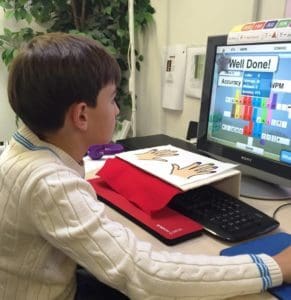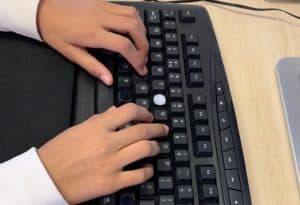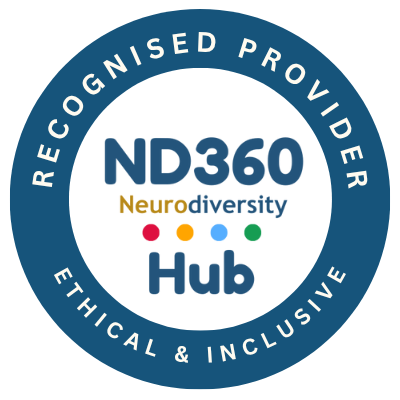 How can touch typing can help a child with dyslexia?
How can touch typing can help a child with dyslexia?
According to the British Dyslexia Association, dyslexia is a neurological difference that primarily affects reading and writing skills. Dyslexic children have difficulty processing and remembering information that they see and hear, which can affect their learning and literacy skills. It can also cause them to have low self-esteem and a lack of confidence in the classroom.
Technology can really help to make communication easier for a child with dyslexia with many assistive tools available such as spell checkers and text to speech tools. But one of the best tools to help a child with dyslexia is learning to touch type.
So what is touch typing?
Touch typing uses all of the fingers on the keyboard to type words without looking. You don’t have to look down at your hands so you can stay focused on the screen.
 Hunting and pecking the keys
Hunting and pecking the keys
Hunting and pecking on the keyboard using two or three fingers takes a lot of effort and concentration. For dyslexic children who may struggle with concentration and memory, by the time they have located the keys, they may end up losing their initial thoughts. It’s so frustrating for them. Touch typing avoids all of this. Yes, it takes a lot of practice, but once learnt, it’s never forgotten.
But how does touch typing work?
Touch typing helps to reinforce phonics knowledge by learning to spell words using muscle memory. This helps to make writing so much less frustrating and written work more fluid and effective.
So, what is muscle memory?
Muscle memory is where finger movements start to become a pattern that is learnt off by heart. After lots of practice, the movement becomes unconscious and stays in the brain, so that we can recall this information at our fingertips without any conscious thought. It’s a bit like learning to ride a bike. When you first start, you are a bit wobbly, not quite sure of the movements, but after lots of practice, you don’t need to consciously think any more. It’s the same with touch typing.
What are the benefits of touch typing for a child with dyslexia?
Typing at the speed of thought
Touch typing helps a child to think freely and type at the speed of thought. There is no distraction in having to look down at the keyboard to hunt and peck for the correct key. Making familiar patterns with the fingers starts to become automatic so that they begin to spell sight words and common words just by remembering the movement of their fingers on the keyboard.
Kinesthetic Learning
The repeated movement of their fingers on the keys is especially useful for those children who are kinesthetic learners, where they learn more effectively by doing something physical.
Less stressful in exams
It means that in class or in exams, children with dyslexia can get their thoughts down on paper more easily. They don’t have to worry about how to form a word on paper. They don’t have to hold a pen in the right way to make a mark and they don’t have to make the letters and words look neat or spaced out.
No more messy handwriting
Using a computer, they can type freely, without worrying about messy handwriting or errors. If they have learnt to touch-type properly, they will be typing accurately, barely having to hit the backspace key to correct their work. Another huge bonus, when they are trying to stay focused on their thoughts.
Improved productivity
Concentration improves and output increases. They will be able to ‘write’ faster, sometimes up to five times their normal writing speed. This will save them time and make learning so much easier and enjoyable.
Increased confidence
There are so many reasons why touch typing is the right choice for children with dyslexia. It helps them to transform their thoughts and ideas freely into words, giving them the confidence and ability to communicate effectively.
How can we help?
Tutor supported touch typing lessons
At Type IT, we offer tutor-supported touch typing courses run by tutors who are experienced in helping children with dyslexia. We tailor the course individually for each child and monitor their progress each week.
Dyslexia friendly courses
Our tried and tested courses are designed individually for each student so that they can learn in a way that works for them. There’s no magic wand to learning to touch type – just patience, persistence and the right kind of help. We are here to provide just that.
Get In Touch
 Contact Us
Contact Us

